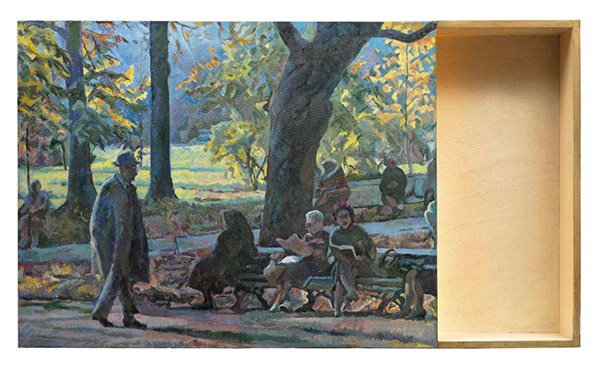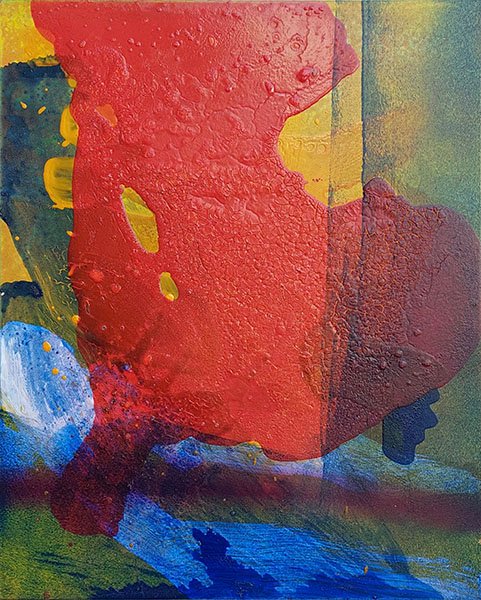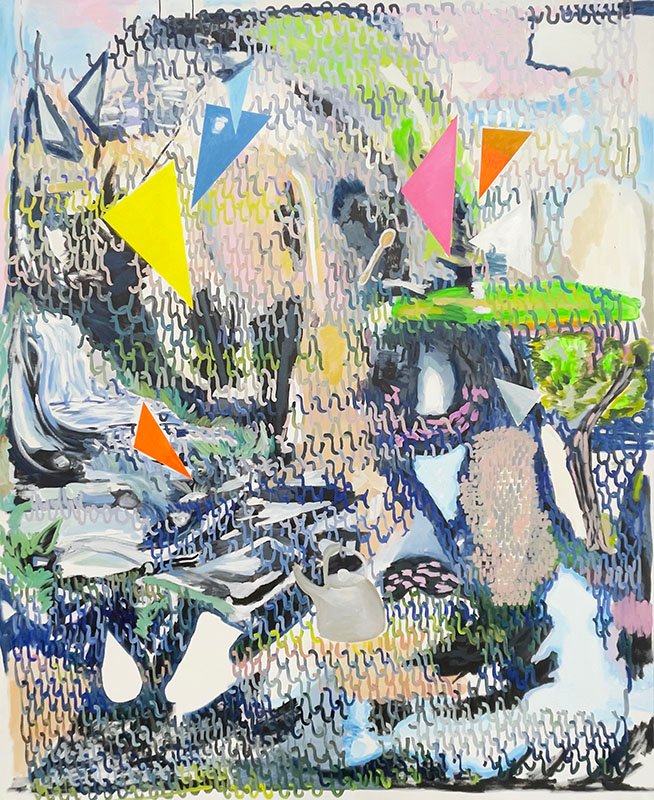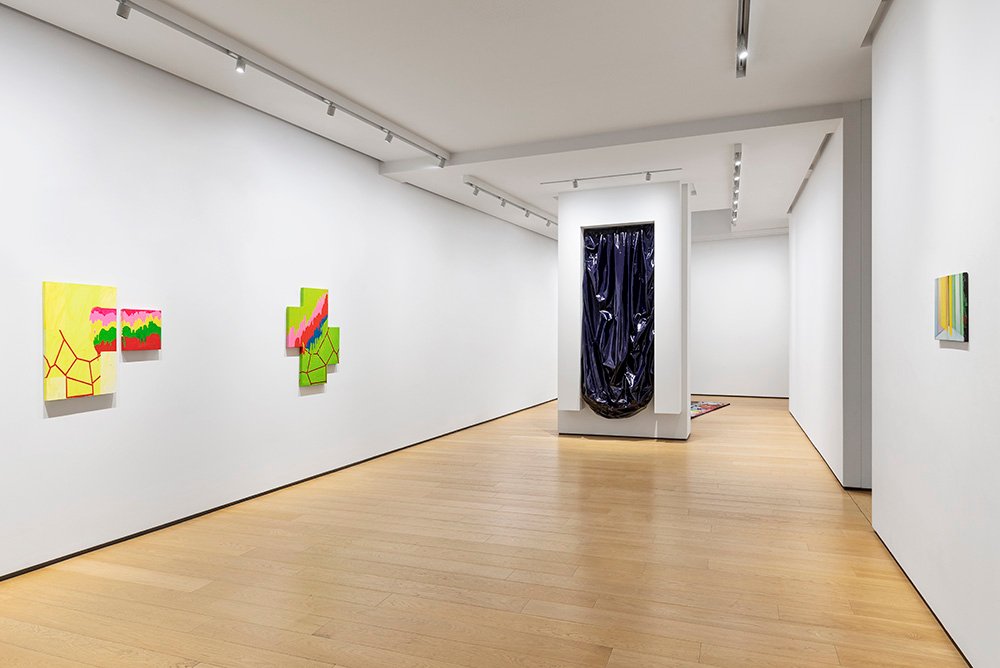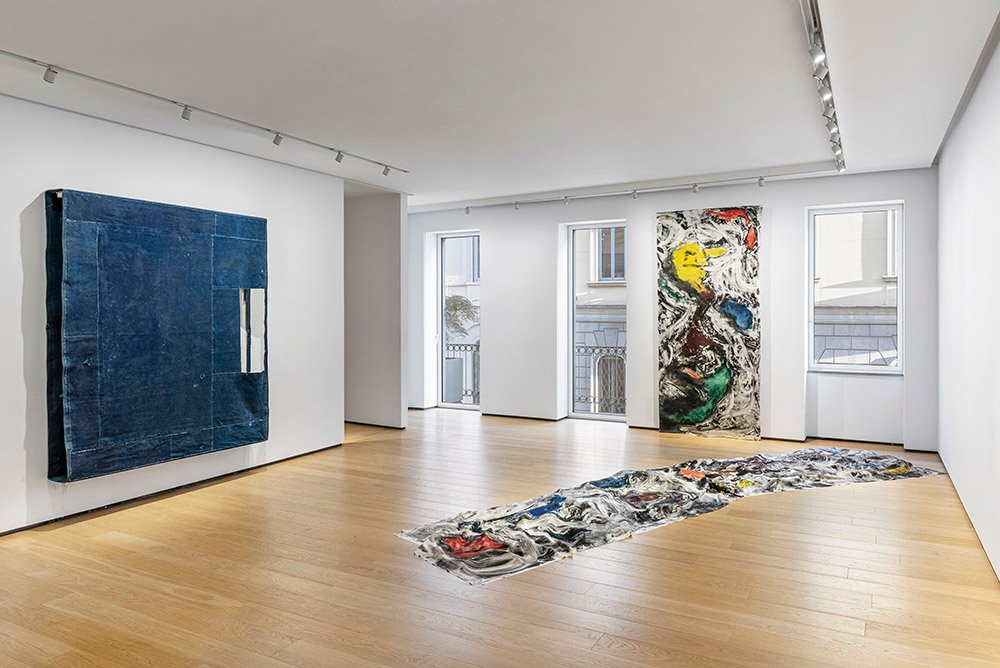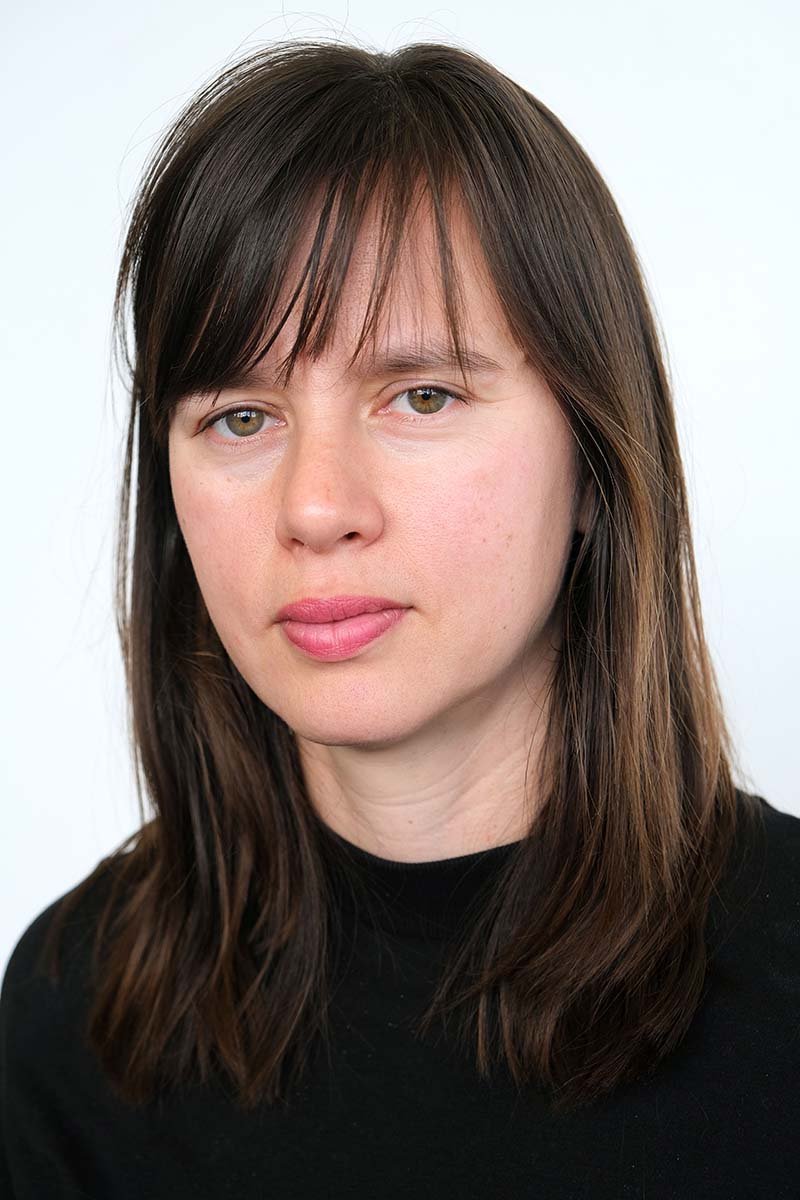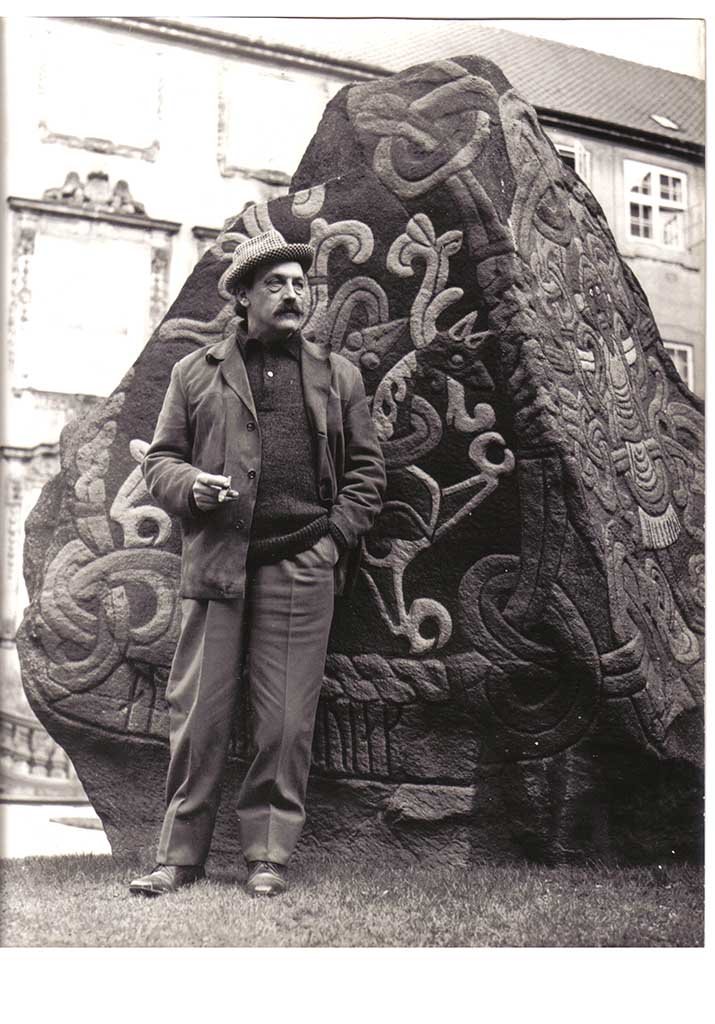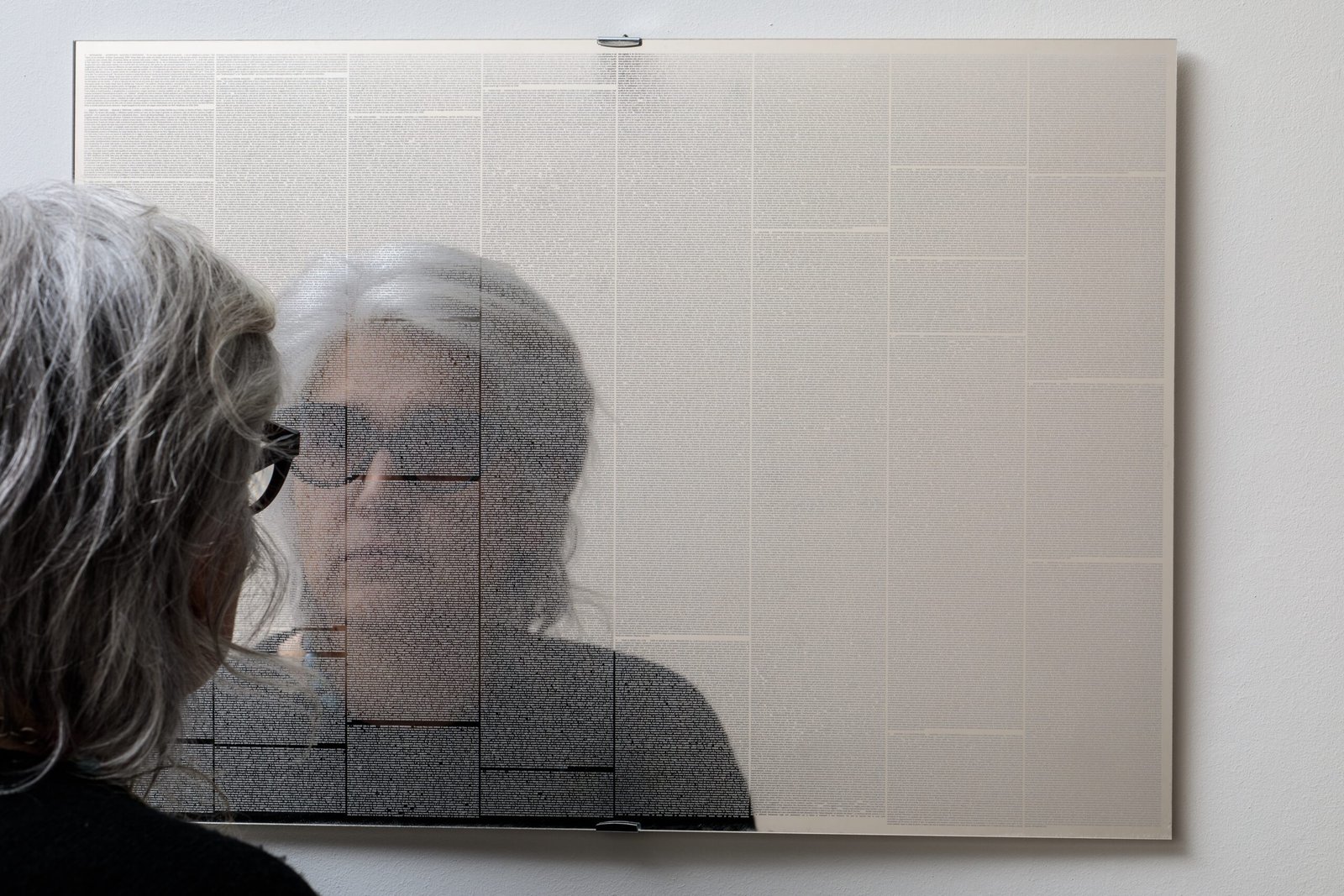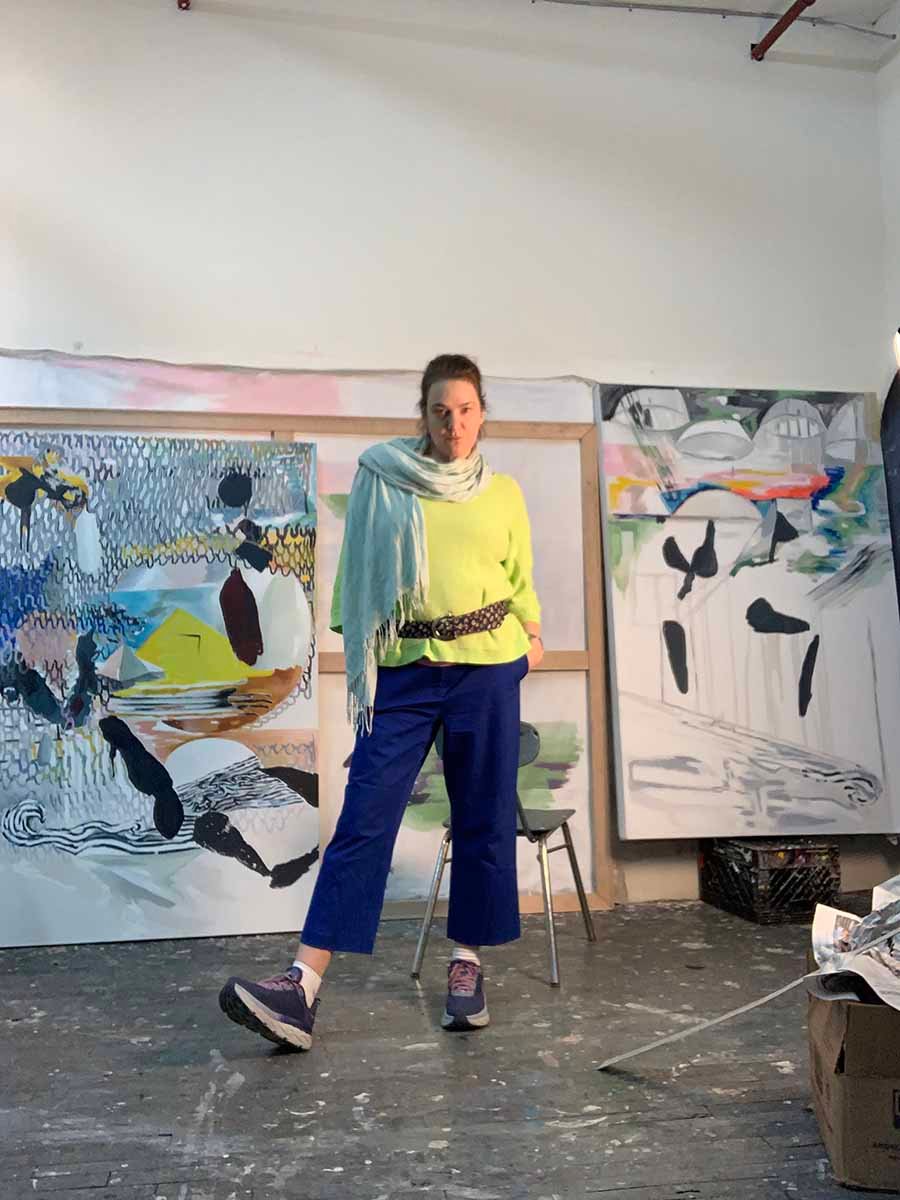Glitch
08.11.2023 – 27.01.2024
BUILDING presents, from November 8th, 2023 to 27th January, 2024, the group exhibition Glitch, an exhibition project curated by Chiara Bertola and Davide Ferri, which features a selection of twenty-four paintings by ten Italian and international artists from different generations: Simon Callery, Angela de la Cruz, Peggy Franck, Pinot Gallizio, Mary Heilmann, Ilya & Emilia Kabakov, Andrea Kvas, Maria Morganti, Farid Rahimi, Alejandra Seeber.
In the regular and even fabric of reality, stretch marks can sometimes appear, superficial tears that reveal the presence of another dimension. The saturated fullness of life suddenly breaks down, giving way for vents from which signals of “an energy of existence” seep in, as the philosopher François Jullien stated.
Something similar occurs in painting, when the precise correspondence between image and medium fails, or when the pure materiality of painting overflows, hinting at an unprecedented vitality. All of a sudden, this disjointedness gives rise to something that presents itself to the viewer with no warning; something that, although it might potentially go unnoticed, opens a chink, a breach that reveals another view and another nuance of thought. Therefore, the focus is aimed at a kind of painting whose truth does not lie in representationand its organicity, but rather in an the idea of the a painted image that negotiates with different media and formats, embracing its presence and material ramifications.
The exhibition, which includes both figurative and abstract works, refers to an idea of “mere painting” that plays with the idea of “real painting”, or the idea of truth in painting, which has always had a place in reflections about the medium.
The resulting suggestions may sink their roots in some pictorial research of the second half of the twentieth century, in particular the ones of) exponents of the 1960s current of post-painterly abstraction, and currents of the seventies (such us Radical Painting, Pittura Pittura and Support Surfaces), which reflected a widespread desire for objectivity, and the consequent disappearance of subjectivity (that is, the artist‘s disappearance to make way for the viewer), and reflections on the genre, regarding its key elements (format, size, medium, color – “color that does not embellish”, as Maria Morganti says), whose outcome is a painterly object that rejects any kind of narrative, representation or illusion character, and asserts its presence without signifying anything other than itself.
The exhibition shows painting in its pure essentiality, together with a fecund crack, a shift, caused by subverting our habitual, conventional and, way of seeing. This produces a gap that generates a sort of energetic vitality at a primordial level, in terms of the everyday – in the sense of the pace and daily traces of time – and craftsmanship – the pleasure of making things by hand.
If convention has never taken artistic practice very far, then seeking some kind of stumbling block in representation is a necessary condition for pushing art towards a dimension of vitality. A stretch mark in the saturated, compact system of what is known and predictable, can therefore turn out to be a fertile space of freedom, in which life can flow, roam, complete and renew itself.
The exhibition therefore includes:
Works that recall this idea of low, material, painting, referring to artisanal and industrial practices, through the encounter, or even collapse between a specifically painterly dimension and these practices, as in the case of Pinot Gallizio‘s “industrial painting” (Alba, 1902 – 1964).
Works by artists whose painterly practice is defined through an impersonal, non-authorial gesturality, as in the case of Simon Callery (London, 1960), who pursues an idea of the sublime by contaminating the materiality of the painting with the landscape, through proxemics and prolonged contact; or the one of Ilya (Dnepropetrovsk, 1933-2023) & Emilia (Dnepropetrovsk, 1945) Kabakov, in which the artist couple reflects on the concept of authorship by inventing an imaginary artist who dialogues with art history. In the exhibition, the work Charles Rosenthal, Im park 1930becomes an engaging commentary on objectivity and subjectivity in the artistic expression of light, inviting the viewer to question the distinction between painted light, real light and, crucially in the Kabakovs’ work, the artist’s imagination.
Works in which painting becomes an organism that moves among the folds of dark spaces, in whose meanders we can lose the sense of a fixed, frontal, vision, and access an indeterminate, anonymous, and totally immersive dimension as in the works of Peggy Franck (Zevenaar, 1978); or in the ones of Angela de la Cruz (A Coruña, 1965), where the elements that make up paintings (canvas and frame) seem unable to contain the excess materiality of the paint and become three-dimensional organisms, unstable in their reconfiguration as agglomerations of folds, bulges and surpluses.
Works as a background, or as a landscape of the spectator, where the viewer enters inside a set and where the work becomes a place to accommodate the things that may happen there.
The works of Alejandra Seeber (Buenos Aires, 1969), for example, bring forth an unstable vision that can never be defined as univocal, staining her canvases to give the image another opportunity to react, lose its bearings and multiply.
Works in the format of paintings, where the pictures involve all their material aspects – a loom, an edge, or even a backhand. The pieces of Andrea Kvas (Trieste, 1986) are paintings that should not be interpreted as coherent and organic representations; on the contrary, they have to be understood as apparatus where all their material articulations contribute to shape the image.
Works that can be an invitation to redefine the way we look at abstract composition, as in the case of Mary Heilmann (San Francisco, 1940), who approaches the painting no differently from how she paints the surface of ceramic, with a posture capable of eluding the limits and inhibitions that derive from the blank canvas.
Works that reconfigure space by refracting it, as in the works of Farid Rahimi (Losanna, 1974), who for years has been painting a corner of a room, or slight depression, and he compulsively varies it by swinging it between plausible representation of an environment and abstraction.
Works that break down and endlessly recombine themselves, as in the case of Maria Morganti (Milan, 1965), each time adding something to, or removing something from a broader scenario that is renewed on each occasion, leaving a trace and a memory of their fragile everyday existence and the passing of time.
The curators:
Chiara Bertola (Turin, 1961) lives and works in Venice. She has been the curator of the contemporary art project “Conservare il futuro” at the Querini Stampalia Foundation in Venice from 1999 to today. She is creator and curator of the FURLA Award for young Italian artists from 2000 to 2015. From 2009 to 2012, she was artistic director of the Hangar Bicocca in Milan, where she conceived and curated the experimental project Vulnerable Lands – A Growing Exhibition, an annual exhibition in 4 stages of growth (2010-11). From 1996 to 1998 she was President of the Bevilacqua La Masa Foundation in Venice. She was among the founding curators of the Ars Aevi Project for the establishment of the New Museum of Contemporary Art in Sarajevo. She was curator of the “Venice Pavilion” of the Venice International Art Biennale (2007), and of the XV Quadrennial of Rome (2008).
She has curated several personal and collective exhibitions in Italy and abroad including those of Roman Opalka (Milan and Venice, 2019), Mariateresa Sartori (Venice, 2019), Paolo Icaro (Venice, 2018), Giovanni Anselmo (Venice, 2017) , Elisabetta Di Maggio (Venice, 2017), Jimmie Durham (Venice, 2015), Haris Epaminonda (Venice, 2014), Qiu Zhijie (Venice, 2013), Christian Boltansky (Milan, 2011), Hans Peter Feldmann (Milan, 2012) , Ilya&Emilia Kabakov (Palermo, 1989, Venice, 2003, Milan, 2012), Michelangelo Pistoletto (Livigno, 2013, Venice, 2000), Marisa Merz (Venice, 2011), Mona Hatoum (Venice, 2009, Sao Paolo, 2014, Buenos Aires, 2015), Remo Salvadori (Venice, 2006), Kiki Smith (Venice, 2005), Giulio Paolini (Venice, 2001), Lothar Baumgarten (Venice, 2001), Joseph Kosuth (Venice, 2000). She has published monographs and catalogs dedicated to contemporary artists. She published the book Curare l’arte with Mondadori / Electa (September 2008); with Bruno editore, Conservare il futuro, 25 Years of Contemporary Art at The Querini Stampalia Foundation in Venice; Walking in the Care of Art, (forthcoming).
Davide Ferri (Forlì, 1974) lives in Rome. He is an art critic and independent curator. He is a professor of Museography at the Academies of Fine Arts in Macerata and Bologna. Since 2019, he has been curator of the “Pittura XXI” section within Arte Fiera, Bologna. He regularly collaborates as a curator with Palazzo De ‘Toschi – Banca di Bologna, and with the Coppola Foundation in Vicenza. Since 2012, he has been curator of the art section of the Ipercorpo theater festival.
He has curated several exhibitions and projects in contemporary art galleries and museums, including: Paintings as Places, an exhibition in five locations held on the occasion of Bergamo Brescia, Italian Capital of Culture, 2023; Bettina Buck, Finding Form, Palazzo De’ Toschi, Bologna, 2023; Italo Zuffi, Recto and Verso (with Lorenzo Balbi), MAMbo Museum and Palazzo De’ Toschi, Bologna, 2022; Markus Schinwald – Misfits, Fondazione Coppola, Vicenza, 2020; Ordinary Realities, Palazzo De’ Toschi, Bologna, 2020; Neo Rauch – Rosa Loy, La Torre, Fondazione Coppola, Vicenza, 2019; Figure and Background Only / Courtesy Emilia Romagna, Arte Fiera, Bologna, 2019; Afro. Thoughts in The Hand, San Domenico Museums in Forlì, 2015; All of Italy is Silent, Villa Massimo – German Academy, Royal Academy of Spain, Embassy of Brazil, Polish Institute, Russian Center of Science and Culture, Rome, 2015; Franco Guerzoni – No Place, Nowhere. Stray Journeys with Luigi Ghirri, Triennale di Milano, 2014; The Inevitable Figuration. A Scene from Painting Today, Luigi Pecci Center for Contemporary Art, Prato, 2013; Sentimiento Nuevo (with Antonio Grulli), MAMbo Museum, Bologna, 2011.





